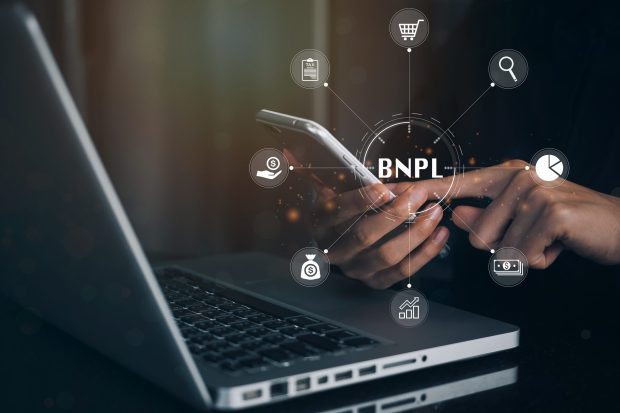PYMNTS Intelligence: Is Consumer Loyalty Stronger to Merchants or to BNPL?

Buy now, pay later (BNPL) made up only about 2% of all global payments toward the end of 2021, but its sales volume is on track to double, exceeding $181 billion this year. As adoption surges, with vendors such as Klarna, Affirm, Splitit and Afterpay reporting year-over-year growth ranging from 46% to 104%, retailers have climbed aboard, and no wonder: A recent report noted that nearly half of consumers spend more when using BNPL than they would if using traditional credit cards.
The fast rise of BNPL is also shifting merchant perspectives on its impact on consumer loyalty. Retailers spend a tremendous amount of money and resources on attracting customers. Many have also integrated BNPL into their payment stacks to help convert sales. There is a growing debate on whether consumers are more loyal to merchants or BNPL providers.
It is generally more expensive to attract new customers than retain current ones. Similarly, existing customers tend to spend more and buy more often. Still, loyalty in BNPL appears to be fragmented at best. Consumers are driven by opportunity — the best deal, the best shipping option, the availability of what they want. With BNPL, consumers are now working with an entirely different brand at the most critical part of the checkout process, at which consumers value trust and security the most.
Conversely, consumers seem to be more loyal to their credit cards for various reasons, such as having the ability to consolidate purchases onto a single statement while accumulating rewards for the shopper. This month, PYMNTS Intelligence explores how credit cards with rewards that include BNPL installment features can boost customer loyalty to merchants and potentially increase card utilization.
Are Issuers Losing Top-of-Wallet Preference to Legacy BNPL?
BNPL’s popularity is no surprise: These services let consumers pay for purchases in installments over time, usually without interest. One in five Americans in a recent survey said they had used BNPL to buy something over the previous 12 months, and 23% of consumers said they are more likely to buy from a merchant that offers BNPL — a figure that rose to 51% for consumers who had used BNPL over the previous year. Moreover, 44% of consumers who had previously used BNPL said they preferred it over credit cards, partly due to its affordability and the option of interest-free payments.
BNPL continues to disrupt the traditional credit market. Still, credit card issuers have made significant investments to foster cardholder loyalty with the intent of being top-of-wallet or first choice for payments. Many issuers may find themselves becoming less relevant when it comes to installments at checkout, as legacy BNPL providers can cannibalize purchases made with cards, thus potentially diluting cardholder loyalty. A study found six out of 10 BNPL users think the payment method could replace their credit cards.
Marrying BNPL with Credit Cards
New data from BNPL provider Splitit indicates that 60% of consumers would prefer to use BNPL within their existing credit cards instead of opening new lines of credit. The survey also found that 83% of respondents felt that credit card perks — including cash back, points and miles — are important, and 48% said these bonuses are the greatest reason for their use of credit cards. The survey also showed that 83% of consumers are happy with their credit cards and 71% view the cards as part of a balanced approach to personal finances. Sixty-nine percent of respondents said they would use their cards more often if the interest rate were lower, and 63% would do so if they could pay in smaller, interest-free installments.
While some consumers are specifically interested in BNPL because they lack access to traditional credit, shoppers who have credit are still interested in BNPL as a payment option for purchases beyond a certain cost threshold. PYMNTS found that 43% of worry-free consumers are interested in using BNPL to pay for higher-priced, one-time retail purchases.
One way to gain the best of both worlds of credit cards and BNPL could be through a flexible orchestration layer enabling consumers to leverage balances on their existing credit cards to pay in installments without new financing or additional interest or fees. Because it is network-agnostic, merchants can offer installment payments for most major credit cards. Consumers with the available balances on their credit cards are automatically prequalified, and they would be able to take advantage of their cards’ rewards programs. There are no application fees or changes to their credit reports, creating minimal consumer friction. However, such an approach can be successful only with broad merchant adoption and ubiquity across all cards and networks.
BNPL appeals to consumers by allowing them to budget better, but loyalty programs are one of the greatest purchasing incentives. Recent PYMNTS data shows that 64% of consumers say store cards provide better rewards compared to 57% who report BNPL doing so. Integrating BNPL installments into credit card offerings with rewards programs provides a unique opportunity to drive cardholder loyalty and usage at the point of sale.

